
After separating from The New Buffalo Springfield around late July 1969, drummer Dewey Martin signed a solo deal with Uni Records in October.
Shortly afterwards, he returned to the studio and, abetted by several session musicians (including guitar ace James Burton), he recorded a version of the country favourite “Jambalaya (On the Bayou)” backed by his own composition “Ala-Bam”, as a prospective single.
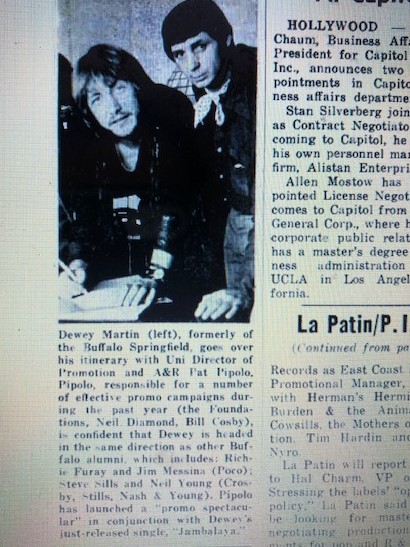
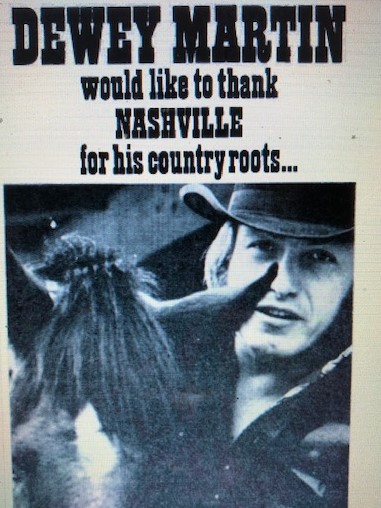
Under the musical direction of Mike Zalk, his former group meanwhile changed its name to Blue Mountain Eagle and recorded an eponymous album for Atco Records under the direction of David Geffen. Listening to it, the record bears all the hallmarks of The Buffalo Springfield sound.
By the time Blue Mountain Eagle’s album finally appeared in the shops in May 1970, Martin had been busy working on his next project, which was a more straightforward country-rock affair.
The seeds of the new group, later to be called Medicine Ball, had been sown shortly after the release of his solo single “Jambalaya (On The Bayou)” in October.
Credited to Dewey Martin, the single attracted little attention and even fewer sales, although this probably had something to do with the fact that only a handful of copies were pressed.
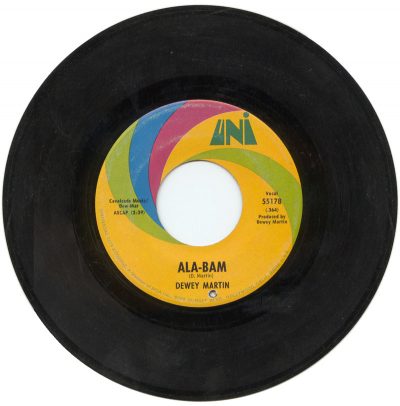
Undeterred, Martin set about piecing a new group together with 12-string guitarist John Noreen (b. 13 August 1950, Los Angeles, California), a former member of folk-rock band The Rose Garden – and best known for scoring a top 20 US hit in 1967 with “Next Plane to London”.
“I think Dewey and I got together through a mutual business partner, Charlie Greene of Greene and Stone,” recalls Noreen.
“They produced my band The Rose Garden and they also produced The Buffalo Springfield among many others.
“It was just myself on guitar and steel guitar, Dewey on drums and a bass player named Terry O’Malley. We would rehearse at my house in the San Fernando Valley. I remember making some recordings of the rehearsals to check our progress.
“Two of the songs I remember were ‘When The Telephone Rings’ and ‘Sittin’ Here Thinkin’. Anyway, it was decided to try another bass player, and we tried a few [but] I do not remember any names.”
Sometime in mid-December, Noreen bailed out. “I was going through a bad period in my life at that time. Uncle Sam was trying to send me off to Vietnam and I was a mess. My recollection of Dewey was that he was a good guy, he was funny and a good drummer.”
Starting from scratch, Martin ran into lead guitarist Billy Darnell in Nudie’s tailors around Christmas 1969 and asked him to form a new group with a guitarist and drummer who had recently come off the road with the late pianist Billy Preston. It wasn’t the first time the two had met.
Born in Michigan and raised in the San Fernando Valley, Darnell first bumped into Martin during a session break for Buffalo Springfield Again in late 1967.
Popping out to buy some drum sticks from a local music store, Martin noticed Darnell playing Stephen Stills’s “Go and Say Goodbye” on a guitar and the pair immediately struck up a rapport.
Though Martin subsequently invited Darnell back to the studios to watch Buffalo Springfield record, the pair wouldn’t meet again for another year, when Darnell found his band opening for New Buffalo Springfield on a couple of southern Californian dates.
Darnell’s previous musical accomplishments were modest – besides working with a Hollywood band called The Orphans and playing a couple of local dates with Albert King, his other notable achievement was doing session work for Dave Allen & The Arrows.
Nevertheless, Darnell would ultimately become Medicine Ball’s longest serving member and would continue to work with Martin, on and off, over the next three decades.
Within days of Darnell’s arrival, Martin decided to dispense with the drummer and guitarist and began looking around for fresh blood.
To fill the bass slot, Martin hired Terry Gregg (b. 18 March 1945, Port Angeles, Washington), formerly a member of Merrilee Rush & The Turnabouts and also a recent try out for the Righteous Brothers’ support band.
Around the same time, Martin added singer/songwriter and guitarist Ray Chafin (b. 26 December 1940, Williamson, West Virginia), whose musical career had started in the early 1960s when he rubbed shoulders with the original Beatles while playing at the Star Club in Hamburg, Germany.
From there he returned home and worked for Fraternity Records in Cincinnati before recording for the LHI and Tower labels and co-writing songs for singer Dobie Gray.
Chafin’s arrival coincided with the addition of singer/songwriter and keyboard player Peter Bradstreet (b. 12 April 1947, Oak Park, Illinois).
While Chafin’s involvement with Medicine Ball would prove to be brief, Bradstreet, like Darnell, became another Medicine Ball mainstay. He’d also later co-found the country-rock band Electric Range with Darnell in the early ’90s.
Raised in Chicago, Buffalo and Dayton, Bradstreet had previously recorded an unreleased album with folk artists John Alden, Sandy Roepken and Dave Garrison in New York for the Vanguard label before moving out to Los Angeles in late 1969.
“Ray Chafin introduced me to Dobie [Gray] and Terry Gregg, whom I joined for a Turnabouts session [and] also got us together with Dewey and Billy,” remembers Bradstreet.
With Darnell arranging material and former Rolling Stones engineer Dave Hassinger producing, Medicine Ball entered the studios in early 1970 to record Ray Chafin’s “The Devil & Me”.
“I remember Dewey loved the song, which initiated our meeting,” says Chafin. “It was that meeting which started my involvement with Medicine Ball [but] the whole experience was rocky from the beginning.”
While the strong material bode well for the group’s future, it soon became apparent that Medicine Ball was not going to be a democratic band; rather it was merely a vehicle for Dewey Martin’s solo career.
This realisation led Chafin to move on after the first session and the remaining members cut two more tracks – Dewey Martin’s “Indian Child” and Peter Bradstreet and John Alden’s “I Do Believe”.
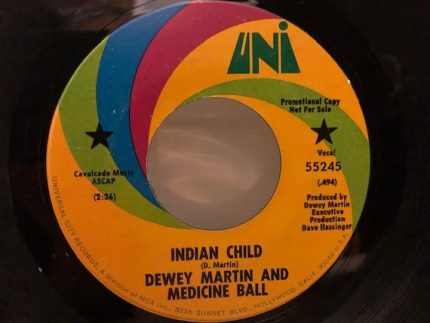
With Bob Stamps added on guitar, the band played an unannounced set at a small local venue.
As Gregg fondly recalls: “The first and last live performance I did with Dewey was at a North Hollywood lounge, I can’t remember the name. Dewey knew the owner and set up a showcase appearance for the group to plug the album. Well, the band shows up and we’re ushered to a reserved table at the back of the club. They’ve got a cover band playing that was very good. Next, bottles of champagne show up at our table and we’re really lappin’ this stuff up!
“After the other band’s set, the owner gets up on stage and proceeds to tell the audience that he has a special treat for them that night and at the climax of his announcement says, ‘ladies and gentlemen, Dewey Martin and The Buffalo Springfield’.
“Dewey immediately gets up and heads for the stage and the rest of us sit and stare at each other. From there everything was a real struggle dealing with that announcement, plugging into amps we didn’t have time to really get to know or the time to adjust to us, and did three songs we had nailed pretty good in the studio, but they were studio arrangements not arranged for a live performance! Needless to say, we did the songs, the audience was pretty forgiving.”
Gregg says that soon after the gig, he got an invitation back in Seattle that he couldn’t refuse and left the band, followed by recent recruit Bob Stamps.
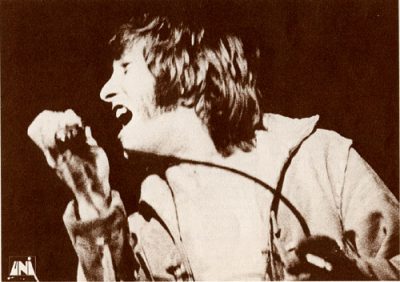
Martin soldiered on recruiting former Sir Douglas Quintet bass player Harvey Kagan (b. 18 April 1946, Texas) and ex-Blue Mountain Eagle/New Buffalo Springfield member Randy Fuller (b. 29 January 1944, Hobbs, New Mexico) on rhythm guitar and vocals.
“I had been working with The Sir Douglas Quintet and we had a lull between performances, recordings, tours, etc. and somehow, through mutual friends, I got to meet Dewey and Bobby Fuller’s brother, Randy,” remembers Kagan.
“We did a couple of early sessions with Dewey singing (his voice reminded me somewhat of Joe Cocker) and used a well known studio drummer, Hal Blaine, who I was excited to meet.
“I did not know why Dewey even wanted to use any other drummer because he was a very good drummer in his own right. He did play drums on the Medicine Ball album and threw together a bunch of musicians from different venues to try to capture the sound he wanted. Randy and I were the two Texas boys. He was a very nice person and always treated me like one of his best friends.”
As the recordings progressed, Martin began to take over production duties from Hassinger and the new line-up proceeded to cut two more tracks – Pete Bradstreet’s “Race Me On Down” (which the keyboard player says was written in about 20 minutes as Dewey had decided that the album wasn’t quite long enough!) and a cover of Buddy Holly’s “Maybe Baby”.
“It was my idea to do ‘Maybe Baby’ on the album and I wanted to sing it but Dewey did it,” says Fuller, who soon lost faith in the Medicine Ball project.
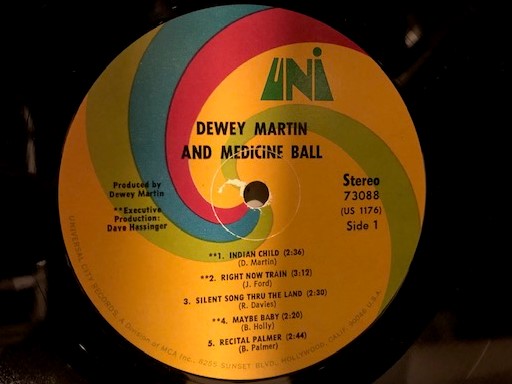
Some rare photos of Medicine Ball was taken up in Decker Canyon before further personnel changes ensued. “[Randy and I] did do a few gigs together around the L.A. area with Dewey, including some college campuses, but I ended up going back with the Quintet and Dewey continued with other replacements,” remembers Kagan.
With Randy Fuller also gone, Martin brought in session steel guitar ace Buddy Emmons and former Danny Cox bass player Stephen Lefever and continued with the sessions.
Around the same time, Billy Darnell also left Medicine Ball (albeit temporarily) following a dispute over his guitar solo on “Maybe Baby” – and Martin invited his former Buffalo Springfield cohort Bruce Palmer to record one of his own compositions, the raga “Recital Palmer”.
Darnell agreed to return to Medicine Ball on a session basis a few weeks later and contributed to the final sessions, which culminated in the recording of five tracks.
Amid all this activity, Martin received some much-needed exposure in the national music press when a Billboard article entitled “Dewey Martin As Innovative Producer” appeared discussing the fruits of the sessions.
In the review, published in July 1970, Martin revealed that he had been “using pan techniques in recording drums, steel guitar and strings”. The supposed advantage of using such effects was that an instrument could “move from one channel to another”.

However, despite the advances in the studio, the group was slowly imploding.
Following the final sessions, Peter Bradstreet dropped out (he subsequently reunited with Darnell in Doug Kershaw’s road band and the Atlantic Records’ band Starbuck) and a new short-lived line up featuring Martin and Darnell alongside bass player Tom Leavey (who Martin had first met at Peter Tork’s house) and singer/songwriter and pianist Charles Lamont, formerly a member of Alexander’s Timeless Bloozband came together.
The quartet were given a studio in Universal City to rehearse, but despite working on some interesting jazz-inspired material, the project quickly fell apart. It may well have been this line up that photographer Jim Britt captured while playing at a small club called Jason’s (see photographer’s details at the end).
While Martin struggled to keep Medicine Ball together, Uni released the group’s eponymous album, which attracted a positive write up in the August edition of Variety magazine. Other reviewers agreed.
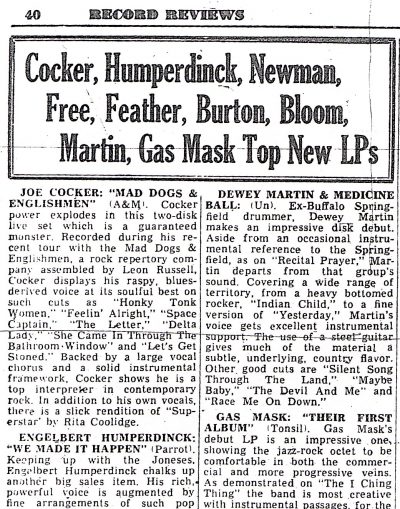
Dick Hartsook, writing in the Texas newspaper, Abilene Reporter-News on 13 September noted that, “Dewey Martin & Medicine Ball should have a tremendous amount of excitement in the music world for a while. The group has one of those necessary winning combinations.”
The reviewer goes on to describe the record as good, heavy music with fresh lyrics.
“Dewey has one of the most dynamic voices I’ve heard in a while, and considering he’s the drummer for the group, that’s saying a lot,” beams Hartsook.
“Playing good drums takes a lot of concentration, and Dewey plays drums and sings at the same time, doing a lot with both.”
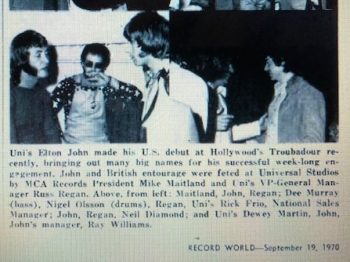
Indeed, although Dewey Martin & Medicine Ball has often been slighted, there is much to commend it.
With the exception of a few tracks, the album stands up surprisingly well and this is largely due to the group’s stellar performances and Martin’s careful choice of material.
As he had indicated in Billboard in July, Martin had selected all the songs for the album “looking first at the lyrics”, since the album was his first vehicle as a singer.
Among the highlights are covers of Jim Ford’s sprightly “Right Now Train” (aka “Love on the Brain”), two introspective Ron Davies songs – “Silent Song Thru’ The Land” and “Change”, and the excellent Bradstreet/Alden collaboration “I Do Believe”.
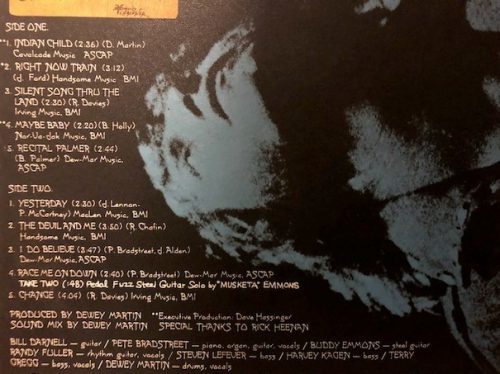
Incidentally, Bradstreet and Alden composed a number of songs during this period including, “Gone Under No Uncertain Terms”, apparently a reference to Darnell’s brief departure, which would be recorded some 25 years later with their group Electric Range.
Yet despite this positive review and the publicity surrounding the use of Martin’s composition “Indian Child” on the soundtrack to the film Angels Die Hard, Uni Records dropped the band shortly after the album’s release.
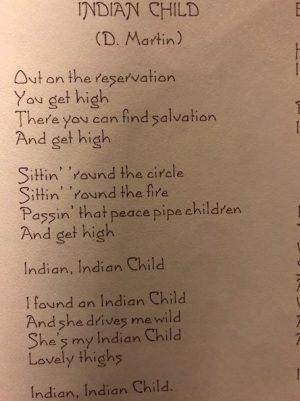
Sessions for an album with RCA culminated in five tracks, although only two emerged on a lone single – “Caress Me Pretty Music/There Must Be a Reason”, released in early 1971. While the single is credited to Dewey Martin & Medicine Ball, it features Martin backed by Elvis Presley’s band.
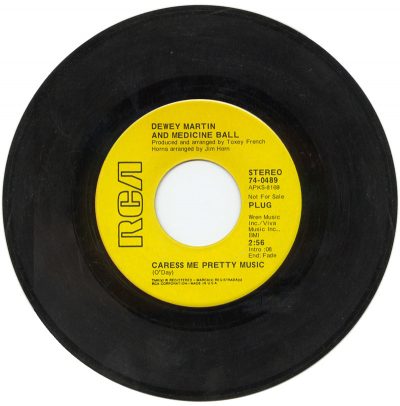
“After Medicine Ball, I went with RCA and got through five takes,” says Martin. “My producer got everyone of the people on the session from the Elvis big band and I sang it live.”
The single pretty much ended Martin’s recording career; after producing an album for Truk, entitled Truk Tracks, and appearing on a late ’70s Hoyt Axton record, he dropped out of music for the rest of the ’70s and became a car mechanic.
Martin did briefly reunite with Darnell and bass player Tom Leavey in the mid-’70s and worked with songwriter P F Sloan on a proposed album. The project however, failed to progress beyond the rehearsal stage.
During the mid-’80s, Martin did return to the drum stool reuniting with Bruce Palmer in the tribute group Buffalo Springfield Revisited in 1985. The band toured fairly extensively (an appearance at the Vietnam Veteran’s Benefit concert at the L.A. Forum in February 1986 being among the highlights) and recorded a version of Neil Young’s “Down To The Wire”, before Martin pulled out.
Reunited with Darnell, Martin worked with a short-lived band called Pink Slip. The group, which also included former Byrds bass player John York and ex-Crazy Horse guitarist Michael Curtis, gigged informally in the San Fernando area, but never recorded any material.
At the same time, Darnell, Martin and York made a demo with former Eagle Randy Meisner, which resulted in both Darnell and Martin being recruited in to Meisner’s band Open Secret. Led by ex-Firefall singer Rick Roberts, and also featuring Bray Ghiglia, Open Secret subsequently changed name to the Roberts-Meisner Band.
Darnell and Martin, however, soon lost interest and dropped out to form a new group with Michael Curtis and former Al Stewart bass player Robin Lamble, which went under the name Buffalo Springfield Again.
Not surprisingly, Martin’s latest project soon ran foul of the other original members, most notably Richie Furay, who took legal action to prevent him from using the name.
In 1993, Martin moved up to Canada and did several tours in Western Canada as Buffalo Springfield Revisited with Frank Wilks, his brother John on bass/vocals and Derek Atherton on lead guitar/vocals but retired from live work soon afterwards.
After that, he developed his own drum rim, a multi-level drum rim, which he planned to call the “Dewey Rim”. According to Martin, the noted drummer Jim Keltner tried out a proto-type and was going to give him an endorsement. Sadly it wasn’t to be. Dewey Martin died on 31 January 2009, aged 68.
Despite the quality of musicianship, Martin’s post-Buffalo Springfield work with The New Buffalo Springfield and Medicine Ball failed to capture the public’s imagination.
Nevertheless, The Medicine Ball album includes some first-rate material that, arguably, is comparable with the work produced by Martin’s erstwhile colleagues from The Buffalo Springfield. The album’s release on CD, including the non-album tracks, is long overdue.
Many thanks to the following for their generous help: Dewey Martin, Billy Darnell, Terry Gregg, Ray Chafin, Randy Fuller, Harvey Kagan, John Noreen, Peter Bradstreet, John Einarson, Carny Corbett, Trevor Brooke, Derek Atherton and David Peter Housden. The Electric Range website also proved invaluable.
Jim Britt has some excellent photos of Dewey Martin which readers can buy from this website. Some examples include:
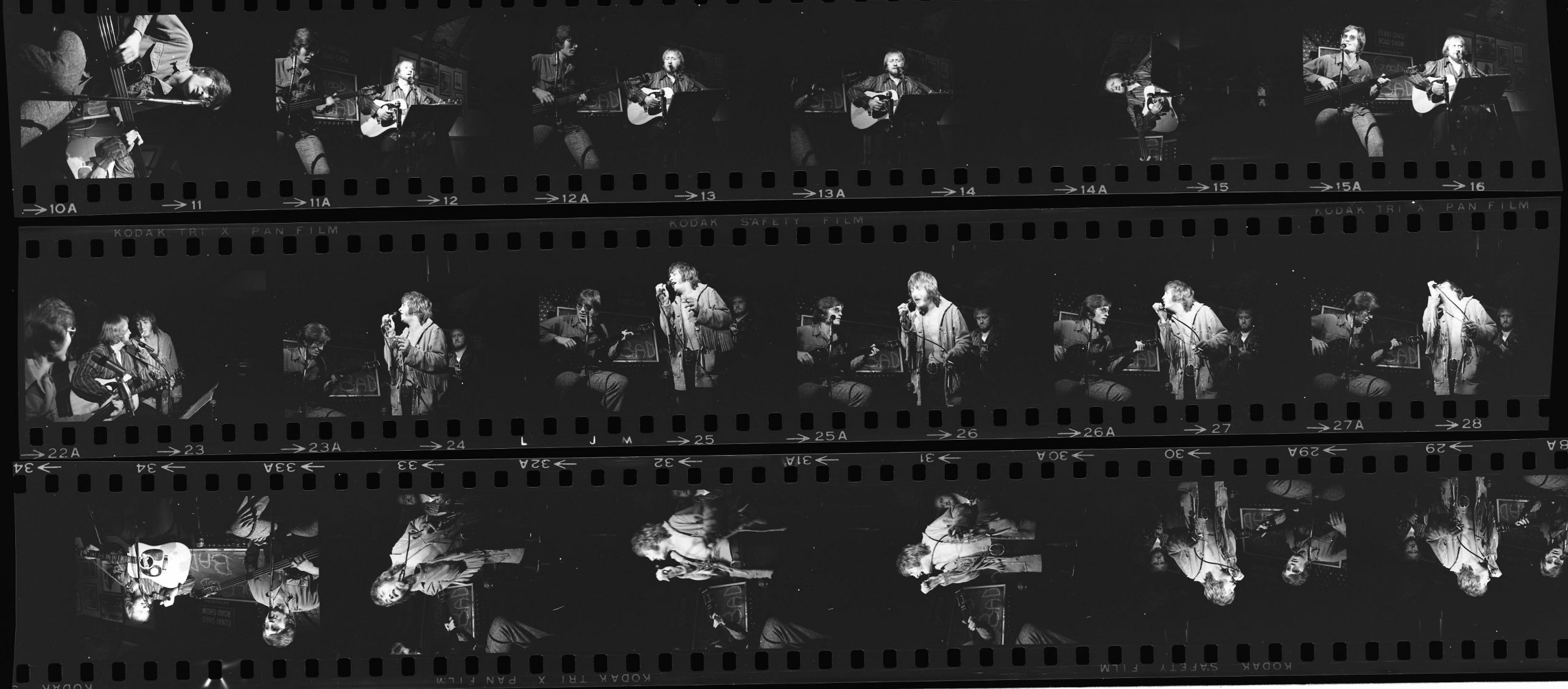

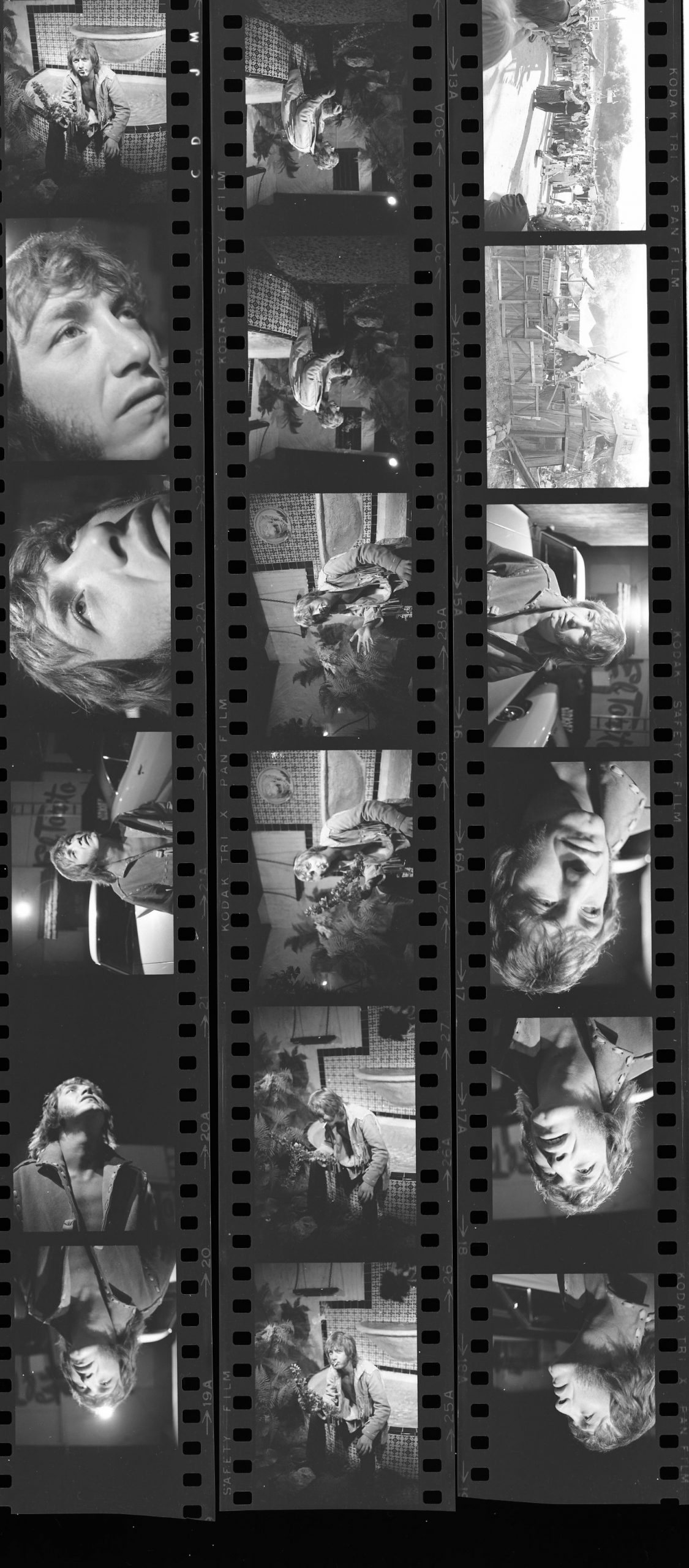
I have tried to ensure that the article is as accurate as possible. However, I accept that there may be errors and omissions and would be interested to hear from anyone who can add material or correct any mistakes.
Copyright © Nick Warburton. All Rights Reserved. No part of this article may be reproduced or transmitted in any from or by any means, without prior permission from the author.
This article was originally posted on the Nick Warburton website on 6 June 2008.

Tom Leavey originally left this comment on 25 February 2009
I was a friend of Dewey’s for 35 years and have played with some of the best drummers on the planet. Dewey had a feel that was uncanny. He knew exactly when to add a fill and leave air in just the right place. We played many a bar gig together and I’ll always remember that right shoulder going up when he would add a delicate fill and feel that bass drum punch right on the one! I’ll miss him!
Harvey Kagan originally left this message on 1 March 2009
I had the pleasure to hang out with Dewey in the late 60s in L.A. and work on the Medicine Ball Album with him and some other souls when I was on hiatus from working with Doug Sahm and the Quintet. He was a very likeable person; fun to be with and he really wanted to make his own way in the music business. I left L.A. in the early 70s and came back to Texas and I did not see him again until he came through San Antonio on a tour during Fiesta with the Eagle’s bass player, Timothy B. Schmidt. We got together the next day with our old friend, Augie Meyer, and had some good San Antonio Mexican food and some great conversation. He will be missed by all but I still have a copy of the Medicine Ball L.P. that holds a lot of memories for me! Thanks to Nick W. for keeping Dewey’s memory alive!! R.I.P. Brother.
Looks like Harvey Kagan died July 2019
Also Tom Leavey appears to have died February 2011